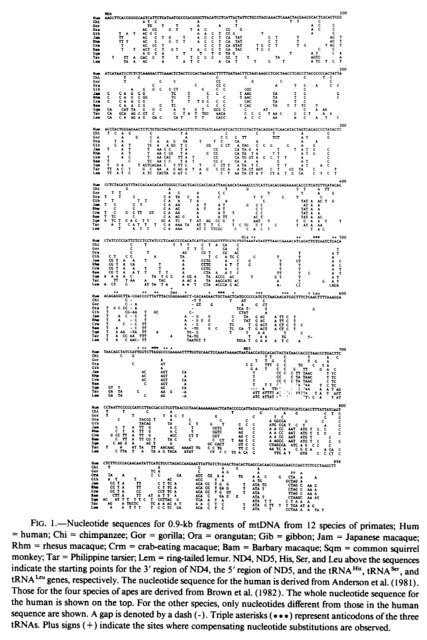A Oil 012 - Molecular Biology and Evolution
A Oil 012 - Molecular Biology and Evolution
A Oil 012 - Molecular Biology and Evolution
You also want an ePaper? Increase the reach of your titles
YUMPU automatically turns print PDFs into web optimized ePapers that Google loves.
FIG. l.-Nucleotide sequences for 0.9-kb fragments of mtDNA from 12 species of primates; Hum<br />
= human; Chi = chimpanzee; Gor = gorilla; Ora = orangutan; Gib = gibbon; Jam = Japanese macaque;<br />
Rhm = rhesus macaque; Crm = crab-eating macaque; Barn = Barbary macaque; Sqm = common squirrel<br />
monkey; Tar = Philippine tarsier; Lem = ring-tailed lemur. ND4, ND5, His, Ser, <strong>and</strong> Leu above the sequences<br />
indicate the starting points for the 3’ region of ND4, the 5’ region of NDS, <strong>and</strong> the tRNAHiS, tRNAS”‘, <strong>and</strong><br />
tRNA Lc” genes, respectively. The nucleotide sequence for the human is derived from Anderson et al. ( 198 1).<br />
Those for the four species of apes are derived from Brown et al. ( 1982 ) . The whole nucleotide sequence for<br />
the human is shown on the top. For the other species, only nucleotides different from those in the human<br />
sequence are shown. A gap is denoted by a dash (-). Triple asterisks (+ * 8) represent anticodons of the three<br />
tRNAs. Plus signs (+) indicate the sites where compensating nucleotide substitutions are observed.











